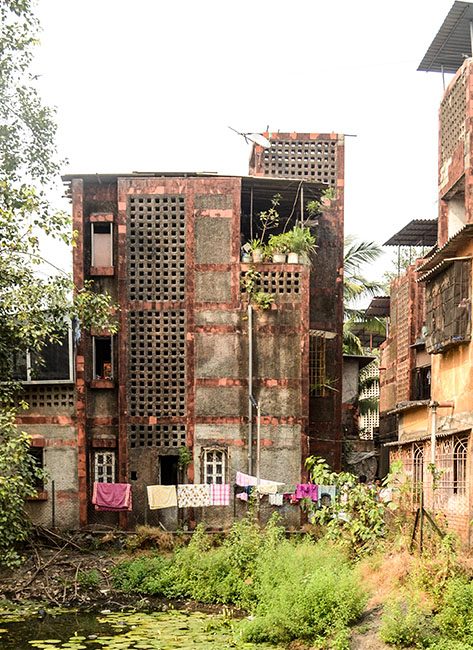CIDCO Housing Navi, Mumbai (IN)
Raj Rewal
Samenvatting
Shirish Patel met een radicaal plan om de stad Mumbai (toen Bombay) te herstructureren, door het land aan de overkant van de haven te ontwikkelen ten behoeve van een groeiende bevolking. De geplande stad voor 2 miljoen mensen, nu bekend als Navi Mumbai, werd gebouwd om een deel van de migranten weg te leiden van Mumbai en tevens de monocentrische noord-zuid gerichte groei-as van de oude stad te transformeren naar een polycentrisch stedelijk netwerk rondom de baai. Men hoopte hiermee bij te dragen aan een gelijkmatiger spreiding van zowel de bevolking als de werkgelegenheid. Navi Mumbai heeft echter niet alleen bekendheid verworven dankzij planningsidealen, maar ook vanwege de experimenten in grootschalige woningbouw die er plaatsvonden. Net als Correa’s Incremental Housing project in Belapur (een district in Navi Mumbai) ging ook CIDCO Housing, gebouwd door architect Raj Rewal uit Delhi, daar de uitdaging aan om voor weinig geld een levensvatbare leefomgeving met een hoge bevolkingsdichtheid te genereren.
In 1988 vroeg de City and Industrial Development Corporation (CIDCO) Raj Rewal om plannen te ontwikkelen voor goedkope huisvesting in Belapur. Het ingewikkelde programma van eisen vroeg om het ontwerp en de bouw van meer dan 1.000 woningen op een heuvel nabij het centrale zakendistrict van de stad.



